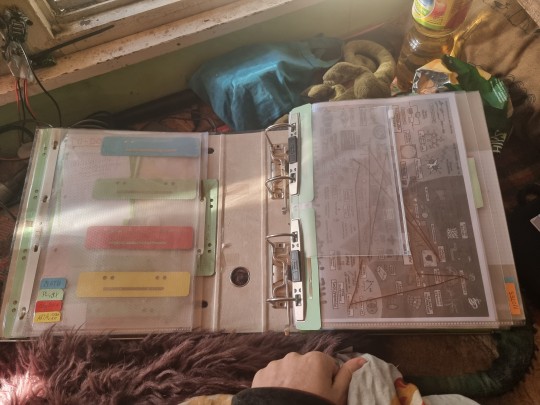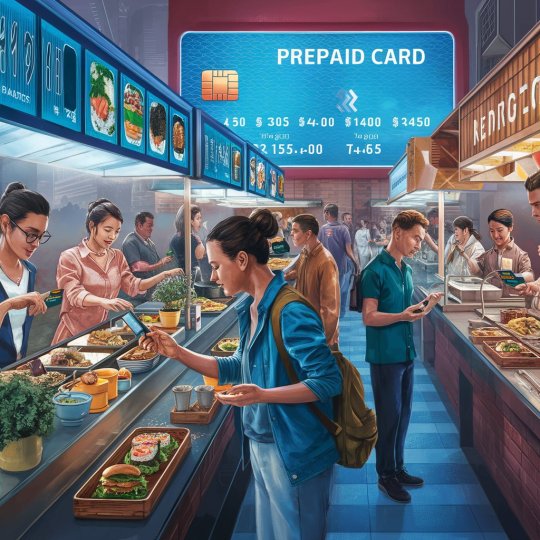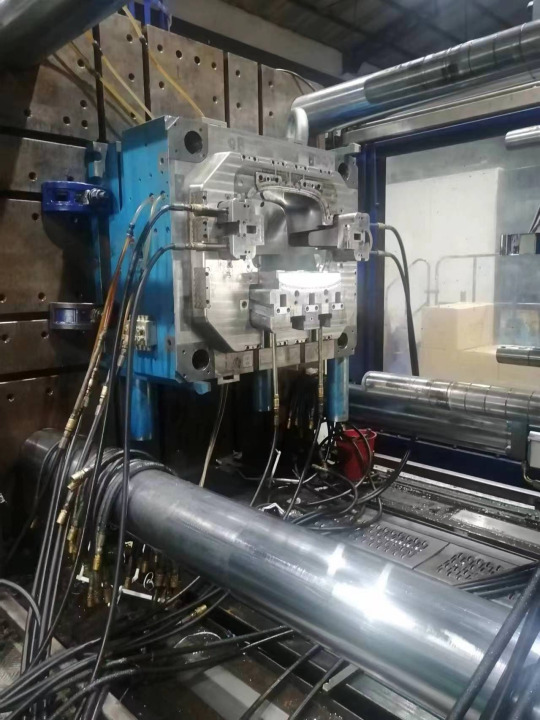#Efficient Processing Systems
Text
#www.inextarchitect.com#All under one roof#• One Roof for Architectural Design#Construction including Interiors and Handing over.#• Single Responsibility#Efficient Processing Systems#• On-Time Delivery#No Cost Change#• Strong iNEXT Builders Team To Work On Your Side#• 100% Material Quality.#THIS LEADS TO SUCCESSFUL DESIGN & BUILD YOUR DREAM SPACE#trivandrumarchitects#budgethomes#budgetinteriors#trivandrumbuilders#INEXT ARCHITECTURE & INTERIOR DESIGN is a leader in residential and commercial interior design. INEXT ARCHITECTURE & INTERIOR DESIGN have f#Please visit our Youtube channel :#https://www.youtube.com/channel/UC0T3...#Please 'like' the YouTube video to help other individuals searching for Trivandrum architects or architects in kerala or budget homes#Please share this YouTube video on Facebook or Twitter#to help others#searching for Architects in Trivandrum or Interior Designers in Trivandrum#Facebook : https://www.facebook.com/inextark#Twitter : https://twitter.com/nextt_i#Pinterest : https://in.pinterest.com/iNEXTT/_saved#Instagram : https://www.instagram.com/inextark#architectsintrivandrum#TurnkeyArchitectureConstructionInteriordesigningintrivandrum#architects#architectsinkerala
0 notes
Text
thinking about Tron program bodies again, blood is not enough for me, where are the wires and fans and plates of metal that bend and snap
I have this vague image of an anatomical diagram of a program
Energy Circulatory System - the Blood, also the digestive track bc they don't have food, Mouth to throat tube to processor located center, near the disk port, it processes and then pumps the energy through the lightlines of the body, if a program overclocks themselves enough, they can suffer burnt or even ruptured circuitry
Energy both fuels the program and cools them off, when cooling processes are activated, the energy will be cooled off by nearby venting processes and will then be circulated throughout the body
Venting System - Similar looking to lungs, two fans that sit within the upper chest, one on each side, subtle ducts can open along the sides of a program to release extra heat (they sorta look like gills, ticklish), Most of the cooling is done through this system, Vents work to expell air through the nose, mouth, and additional vents and ducts, some programs have extra vents for their functions (Mechanic need more bc they work in hotter environments)
The Disc Port - connected directly to the morherboard of the program, this is why if programs are hit there, they will derezz, sorta like a brain (head wounds are not fatal), all processors are connected via wires to the board
Processors - part of the motherboard, eyes, ears, nose, tongue, all the senses are split up into different processing units, These usually have a mechanical unit, like eyeballs, that connect to the board with long thin wires, essentially the nervous system, but centered around the disc not the head
Internal Systems - internal sensors and diagnostics that regulate the body, the Endocrine System, Connected to a programs personal display, will update with warnings and display whatever parameters needed about the body
"Bones" - programs don't have bones, but they do have metal tubes that house their more delicate pieces (wires), Some programs (security) have more reinforcement around vulnerable areas, like the throat and chest, with the plating sometimes even being above the skin, Additonal plating can be added to the forearms and calves without much modification, further integrated armor is an arduous process
Derezzing is still a thing, parts of a program will maintain integrity to a point, then they collapse into voxels, Not all pieces will derezz, if that threshold isn't met, the pieces will remain in their form, basically, if you want to fully derezz a program you have to grind them into voxels, otherwise the bones and other stuff are unlikely to derezz until the energy runs completely out (usually a few days, or the Grid equivalent), where they will then turn into a pile of voxels
Voxels and Energy both evaporate, losing their vivid technicolor hues, until they turn a dark soot grey, at this point they disappear leaving a thin dusty film behind, it's hard to clean and slippery
#does this count as gore???#btw idk how computers work so Im just making this up#If you have suggestions or info on how computers actually work please add bc it would be cool#Tron hc#I guess?#I want programs to have adaptations that fit their function and environment better#mechanics who work in tight and hot spaces with additonal vents and more efficient venting processes#Security with additional armor like an insect carapace#Medics with advanced processors and sensors for diagnostic purposes#aerial programs with better energy circulatory systems to cope with the forces
6 notes
·
View notes
Text
I finally got to write formal professional reports again. It's a sort of RFP sort of functional outline. It's not NEARLY as formal as the ones we did in grad school and wouldn't be up to snuff for literally any proper organization, but my workplace does so much stuff slapdash and disorganized and it drives me insane. I am the model of a would-be burecrat. I love paperwork. Forms. Rules. Reports. It needs to be organized if it's going to be EFFECTIVE and EFFICIENT.
Anyway for this report I basically got free reign bc no one else knows what I'm talking about or how to do it. And it's just??? Such a relief and a delight to 1) get to do things properly 2) get to be competent, and be SEEN as being comptent, and not just a recent grad bumbling around trying to catch up in a workplace that doesn't follow ANY regular rules or protocols and is just. So disorganized.
Like. Given very little sleep and recovering from mild food poisoning, I've been more productive in 3 hours than I am in a lot of full days. It's like being in school again. Competence. Fully outlined and clear, reasonable goals. A PURPOSE.
I should just be given full control of everything as the benevolent dictator of my department, but alas
#franposting#GOD I SHOULDVE FOCUSED ON RECORDS MANAGEMENT#yea its boring but RULES AND REGULATIONS. Burecracy. LEGAL OUTLINES AND RETENTION SCHEDULES. REGULAR REPORTING STRUCTURES#oh baby you are saying the magic words to me#<is the worlds boringest person when it comes to skills and talents. i love paperwork#yes i have an existential need for meaning and am insane and unhinged. but also I know my talent is for bureaucracy and efficient paperwork#anyway this report is gonna be so fuckin good#like im not doing a full functional breakdown (i COULD to show off. but itd probably be a bit much)#but im still doing essentially an rfp minus the tender process bc they already have a consultant#(why they did it this way without ever outlining the requirements of the proposed solution. idk.#dont ask me im the grunt who gets spoken over in meetings i don't get to ask questions despite being the only archivist#*the only one to understand even vaguely the technical requirements or the system)#I AM SO FUCKIN COMPETENT. nothing is hotter that competence and effective paperwork. this is why wizard hubris is the sexiest dnd class#oh babey give me those colour coded date organized file folders
16 notes
·
View notes
Text
How I found a creative way to create a "physical database", so to speak.
1. I use a file/folder with 4 rings.
Pros:
- 4 rings means more stable placement of paper: paper can't get ripped out as easily as in 2-ring folders.
- more ways (3) how to file smaller pieces of paper, as you can use the upper two rings, the centered or the below two rings.
2. The left inside has a foldable/expandable page with four index colors. And it has a bag for to-do lists and random papers, and a bag for yet unused folder strips and sticky labels.



These index colors mark four major branches of my special interest sections:
Blue is for math,
green for physics,
red for cognitive science/neuroscience,
yellow for art/philosophy/literature.
I mark these sections using folder strips.
Green for physics:

Red and yellow for linguistics as mixture of two primary categories [cognitive science and art/philo/lit]:

These folder strips can be attached onto each other to work as efficient "expander" of the dividers, so they can jut out enough for better intuitive coordination through the file/folder:

#old school notes#i know it is so inefficient to use paper for this kind of stuff#i have still not found an efficient way to integrate cross referencing in that file system#why am i even using paper?#my brain can process paper and something to touch far better than anything on screens
43 notes
·
View notes
Text

Top 10 Features of Odoo POS for Restaurant management
Odoo equips your restaurant with everything you need to thrive, from managing tables to tracking deliveries. Here's how Odoo streamlines your operations:
Floor and Table Management: Gain a clear visual layout of your restaurant. Effortlessly seat guests, track table status, and optimize seating arrangements for a smooth dining experience.
Kitchen Order Ticket (KOT): Ensure seamless communication between front and back of house. Odoo instantly transmits orders to the kitchen, reducing errors and ensuring dishes arrive promptly.
Easy Menu Management: Create and update menus with ease. Odoo allows you to add descriptions, images, and modifiers, giving your customers clear choices and boosting sales.
Accurate Billing: Eliminate billing errors with a user-friendly system. Odoo calculates taxes, applies discounts, and splits bills for a smooth and efficient checkout process.
Detailed Reporting: Gain valuable insights into your restaurant's performance. Odoo provides comprehensive reports on sales, inventory, and customer behaviour, empowering you to make data-driven decisions.
Loyalty Programs for Customers: Reward your repeat customers and build stronger relationships. Offer loyalty programs through Odoo to incentivize repeat visits and boost customer satisfaction.
Inventory Management: Maintain optimal stock levels and avoid costly shortages. Odoo allows you to track ingredients, set reorder points, and manage inventory across your locations.
Split The Bills: Accommodate group dining with ease. Odoo allows customers to split bills conveniently, ensuring a hassle-free experience for everyone.
Delivery Management: Expand your reach and cater to delivery orders seamlessly. Odoo integrates with delivery platforms, streamlines order processing, and simplifies delivery management.
Mobile Ordering: Offer convenience to your customers. Odoo enables mobile ordering, allowing customers to browse menus and place orders directly from their phones, maximizing your reach and increasing sales.
Odoo goes beyond point-of-sale, becoming a comprehensive restaurant management system. It empowers you to optimize operations, enhance customer experience, and unlock the full potential of your business. If you thinking to start your new restaurant business, so contact us for your restaurant business management software.
#odoo#point of sale#restaurant management system#restaurant management software#customer satisfaction#order processing#management#businessgrowth#efficiency#inventorymanagement
0 notes
Text
Next-Generation Single Use Assemblies: Advancing Biopharmaceutical Manufacturing

Introduction:
Single Use Assemblies have emerged as a game-changing technology in the field of biopharmaceutical manufacturing, offering numerous advantages over traditional stainless steel equipment.
In this blog, we delve into the latest advancements in Single Use Assemblies and how they are driving innovation and efficiency in biopharmaceutical manufacturing processes.
Enhanced Design and Functionality:
Next-generation Single Use Assemblies feature enhanced design and functionality, incorporating innovations in materials, engineering, and manufacturing processes.
These assemblies are engineered to meet the specific needs of biopharmaceutical manufacturers, providing improved performance, reliability, and ease of use.
Advanced designs offer increased flexibility, scalability, and compatibility with a wide range of bioprocessing applications and equipment.
Integrated Sensor Technology:
Next-generation Single Use Assemblies are equipped with integrated sensor technology that allows for real-time monitoring and control of critical process parameters.
Sensors embedded within the assembly provide valuable data on temperature, pressure, pH, conductivity, and other key variables, enabling precise process control and optimization.
Integrated sensor technology enhances process visibility, reduces the risk of deviations, and improves product quality and consistency.
Automation and Connectivity:
Next-generation Single Use Assemblies leverage automation and connectivity technologies to streamline biopharmaceutical manufacturing workflows.
Automated features, such as valve actuators, pumps, and mixers, enable hands-free operation and minimize manual intervention, reducing the risk of human error and contamination.
Connectivity capabilities allow for seamless integration with process control systems, enabling remote monitoring, data analysis, and decision-making in real-time.
Modular and Customizable Solutions:
Next-generation Single Use Assemblies offer modular and customizable solutions tailored to the specific needs and requirements of biopharmaceutical manufacturers.
Modular designs allow for easy integration of different components and modules, enabling rapid configuration and reconfiguration of production lines.
Customization options provide flexibility to adapt Single Use Assemblies to unique process requirements, optimizing performance, efficiency, and productivity.
Get More Insights On This Topic: Single Use Assemblies
#Single Use Assemblies#Biopharmaceutical Manufacturing#Disposable Systems#Bioprocessing Solutions#Process Efficiency#Advanced Technology#Modular Design#Quality Assurance
0 notes
Text
Unleashing Efficiency: The 4 Indispensable Benefits of SOPs in Business
Navigating the complexities of business can be daunting, but with well-crafted Standard Operating Procedures (SOPs), your enterprise can move with precision and confidence. Let’s delve into four transformative benefits of SOPs:
1. Unmatched Consistency: SOPs are the secret ingredient to uniform excellence. They ensure every product and service meets your high standards, reflecting the reliability…
View On WordPress
#Biz Efficiency#Biz Procedures#Business Best Practices#Business Blueprints#Business Excellence#Business Uniformity#Corporate Consistency#Efficiency Enhanced#Efficiency Experts#Fractional HR; HR Consulting#Operation Optimization#Operational Excellence#Optimize Operations#process development; process creation; SOPs; company structiure; business structure#Process Improvement#Process Perfection#Smooth Operations#SOP Advantages#SOP simplified#SOP Strategy#SOP Success#SOPs In Action#Standard Ops#Streamline Success#Streamlined Systems#Systematic Success#Workflow Win
0 notes
Text


In the current rapidly evolving digital currency market, decentralized finance (DeFi) platforms are redefining the shape of financial services with their unique advantages. Bit Loop, as a leading decentralized lending platform, not only provides a safe and transparent lending environment, but also opens up new passive income channels for users through its innovative sharing reward system.
Personal links and permanent ties: Create a stable revenue stream
One of the core parts of Bit Loop is its recommendation system, which allows any user to generate a unique sharing link when they join the platform. This link is not only a “key” for users to join the Bit Loop, but also a tool for them to establish an offline network. It is worth noting that offline partners who join through this link are permanently tied to the recommender, ensuring that the sharer can continue to receive rewards from the offline partner’s activities.
Unalterable referral relationships: Ensure fairness and transparency
A significant advantage of blockchain technology is the immutability of its data. In Bit Loop, this means that once a referral link and live partnership is established, the relationship is fixed and cannot be changed. This design not only protects the interests of recommenders, but also brings a stable user base and activity to the platform, while ensuring the fairness and transparency of transactions.
Automatically distribute rewards: Simplify the revenue process
Another highlight of the Bit Loop platform is the ability for smart contracts to automatically distribute rewards. When the partner completes the circulation cycle, such as investment returns or loan payments, the smart contract automatically calculates and sends the corresponding percentage of rewards directly to the recommender’s wallet. This automatic reward distribution mechanism not only simplifies the process of receiving benefits, but also greatly improves the efficiency of capital circulation.
Privacy protection and security: A security barrier for funds
All transactions and money flows are carried out on the blockchain, guaranteeing transparency and traceability of every operation. In addition, the use of smart contracts significantly reduces the risk of fraud and misoperation, providing a solid security barrier for user funds. Users can confidently invest and promote boldly, and enjoy the various conveniences brought by decentralized finance.
conclusion
As decentralized finance continues to evolve, Bit Loop offers a new economic model through its unique recommendation system that enables users to enjoy highly secure and transparent financial services while also earning passive income by building and maintaining a personal network. Whether for investors seeking stable passive income or innovators looking to explore new financial possibilities through blockchain technology, Bit Loop provides a platform not to be missed.

#In the current rapidly evolving digital currency market#decentralized finance (DeFi) platforms are redefining the shape of financial services with their unique advantages. Bit Loop#as a leading decentralized lending platform#not only provides a safe and transparent lending environment#but also opens up new passive income channels for users through its innovative sharing reward system.#Personal links and permanent ties: Create a stable revenue stream#One of the core parts of Bit Loop is its recommendation system#which allows any user to generate a unique sharing link when they join the platform. This link is not only a “key” for users to join the Bi#but also a tool for them to establish an offline network. It is worth noting that offline partners who join through this link are permanent#ensuring that the sharer can continue to receive rewards from the offline partner’s activities.#Unalterable referral relationships: Ensure fairness and transparency#A significant advantage of blockchain technology is the immutability of its data. In Bit Loop#this means that once a referral link and live partnership is established#the relationship is fixed and cannot be changed. This design not only protects the interests of recommenders#but also brings a stable user base and activity to the platform#while ensuring the fairness and transparency of transactions.#Automatically distribute rewards: Simplify the revenue process#Another highlight of the Bit Loop platform is the ability for smart contracts to automatically distribute rewards. When the partner complet#such as investment returns or loan payments#the smart contract automatically calculates and sends the corresponding percentage of rewards directly to the recommender’s wallet. This au#but also greatly improves the efficiency of capital circulation.#Privacy protection and security: A security barrier for funds#All transactions and money flows are carried out on the blockchain#guaranteeing transparency and traceability of every operation. In addition#the use of smart contracts significantly reduces the risk of fraud and misoperation#providing a solid security barrier for user funds. Users can confidently invest and promote boldly#and enjoy the various conveniences brought by decentralized finance.#conclusion#As decentralized finance continues to evolve#Bit Loop offers a new economic model through its unique recommendation system that enables users to enjoy highly secure and transparent fin
1 note
·
View note
Text
Prepaid Cards Revolutionize Cashless Dining in Food Courts

Introduction to Prepaid Cards
In today's fast-paced world, convenience is paramount, especially when it comes to dining out. Prepaid cards have emerged as a revolutionary solution, offering a seamless and efficient way to enjoy cashless dining experiences. The concept of prepaid cards is not new, but their integration into food courts has sparked a significant shift in consumer behavior.
Cashless Dining Trends
The global trend towards cashless transactions has gained momentum in recent years, driven by advancements in technology and changing consumer preferences. In food courts, where speed and convenience are key, the adoption of cashless payment methods has become increasingly prevalent.
Challenges in Traditional Payment Methods
Traditional payment methods, such as cash or credit/debit cards, pose several challenges in food court settings. Cash transactions can lead to long queues and delays, while credit/debit card payments may be inconvenient for both consumers and vendors due to processing fees and minimum purchase requirements.
The Emergence of Prepaid Cards in Food Courts
To address these challenges, food courts are embracing prepaid card systems, revolutionizing the way customers pay for their meals. By preloading funds onto a card, customers can enjoy quick and hassle-free transactions, eliminating the need for cash or physical cards.
How Prepaid Cards Work
Prepaid cards operate on a simple premise: customers load funds onto their cards either online or at designated kiosks within the food court. They can then use these funds to make purchases at any participating vendor within the food court.
Advantages of Prepaid Cards in Food Courts
The benefits of prepaid cards in food courts are manifold. For consumers, they offer unmatched convenience and speed, allowing them to make purchases with a simple tap or swipe. Additionally, prepaid cards provide consumers with greater control over their spending, helping them stick to their budgets more effectively.
For food court operators, prepaid cards streamline transaction processing, reducing wait times and enhancing overall efficiency. By centralizing payments through a single platform, vendors can also gain valuable insights into consumer behavior and preferences, enabling them to tailor their offerings accordingly.
Enhanced Customer Experience
One of the key advantages of prepaid cards in food courts is the enhanced customer experience they provide. By minimizing wait times and offering seamless transactions, prepaid cards ensure that customers spend less time queuing and more time enjoying their meals.
Moreover, prepaid cards enable food court operators to implement customized loyalty programs, rewarding customers for their continued patronage. By offering incentives such as discounts or freebies, operators can further enhance the overall dining experience and foster customer loyalty.
Security and Safety Measures
Security is a top priority in any payment system, and prepaid cards are no exception. With robust encryption protocols and built-in fraud detection mechanisms, prepaid card systems offer consumers peace of mind knowing that their financial information is safe and secure.
Additionally, prepaid cards eliminate the need for consumers to carry large amounts of cash, reducing the risk of theft or loss. In the event that a card is lost or stolen, most prepaid card providers offer 24/7 customer support and the ability to freeze or deactivate the card remotely.
Adoption and Acceptance
The adoption of prepaid cards in food courts is steadily increasing, driven by the growing demand for cashless payment options. As more consumers become accustomed to the convenience and benefits of prepaid cards, food court vendors are increasingly recognizing the need to offer these payment methods to remain competitive.
Impact on Business Operations
From a business perspective, the integration of prepaid card systems can have a transformative impact on operations. By automating transaction processing and streamlining administrative tasks, vendors can reduce overhead costs and improve overall efficiency.
Moreover, prepaid card systems provide vendors with valuable data insights, allowing them to track sales trends, identify popular menu items, and target specific customer demographics more effectively. This data-driven approach enables vendors to make informed decisions that drive business growth and profitability.
Future Trends and Innovations
Looking ahead, the future of prepaid cards in food courts looks promising, with continued advancements in technology driving innovation and customization. From mobile payment solutions to personalized loyalty programs, vendors are constantly seeking new ways to enhance the customer experience and stay ahead of the competition.
Challenges and Concerns
Despite the many benefits of prepaid cards, there are also challenges and concerns that must be addressed. Chief among these is the need to ensure consumer privacy and data security. As prepaid card systems become more sophisticated, it is essential for vendors to implement robust privacy policies and security measures to protect customer information.
Additionally, accessibility remains a concern for some consumers, particularly those who may not have access to smartphones or digital payment methods. To address this issue, food courts must ensure that alternative payment options are available to accommodate all customers.
Case Studies and Success Stories
Numerous food courts around the world have already embraced prepaid card systems with great success. From small-scale vendors to large multinational chains, businesses of all sizes have reported significant improvements in transaction processing times, customer satisfaction, and overall revenue.
For example, a recent case study conducted by a major food court operator found that the implementation of prepaid card systems resulted in a 30% increase in sales and a 20% reduction in wait times. These impressive results demonstrate the tangible benefits that prepaid cards can
offer to both consumers and businesses alike.
Consumer Education and Awareness
Despite the growing popularity of prepaid cards, there is still a need for consumer education and awareness. Many consumers may be unfamiliar with how prepaid cards work or may have misconceptions about their usage and benefits. As such, food courts must invest in educational campaigns to inform consumers about the advantages of prepaid cards and how to use them effectively.
Conclusion
In conclusion, prepaid cards are revolutionizing the way consumers pay for their meals in food courts. By offering unmatched convenience, speed, and security, prepaid cards are transforming the dining experience for both customers and vendors alike. As the adoption of prepaid cards continues to grow, food courts are poised to reap the benefits of improved efficiency, increased revenue, and enhanced customer satisfaction.
We hope you enjoyed reading our blog posts about food court billing solutions. If you want to learn more about how we can help you manage your food court business, please visit our website here. We are always happy to hear from you and answer any questions you may have.
You can reach us by phone at +91 9810078010 or by email at [email protected]. Thank you for your interest in our services.
FAQs
1. Are prepaid cards accepted at all vendors in the food court?
Yes, prepaid cards can typically be used at any participating vendor within the food court.
2. Can I reload funds onto my prepaid card?
Yes, most prepaid card systems allow users to reload funds either online or at designated kiosks within the food court.
3. Is my personal information secure when using a prepaid card?
Yes, prepaid card systems employ robust security measures to protect customer information and prevent unauthorized access.
4. Are there any fees associated with using a prepaid card?
Some prepaid card providers may charge nominal fees for certain services, such as reloading funds or replacing lost or stolen cards.
5. Can I earn rewards or loyalty points with a prepaid card?
Yes, many prepaid card systems offer rewards or loyalty programs that allow users to earn points or discounts on their purchases.
#prepaid cards#cashless dining#food courts#payment methods#prepaid card systems#consumer convenience#customer experience#cashless transactions#digital payments#financial security#loyalty programs#transaction processing#data analytics#customer education#privacy concerns#business efficiency#innovation#technology integration#consumer awareness#case studies#success stories#FAQs#blogging#digital trends#restaurant industry#financial technology#prepaid card benefits#prepaid card acceptance
0 notes
Text
Causes and countermeasures of deformation of injection molded parts-9
Serial No. 9 (Friends who are interested can follow Gud Mold and view previous serials from historical messages)
3) Cooling water circuit temperature setting
Heat transfer efficiency of cooling system has a great influence on product deformation. Due to complexity of product structure, an absolutely uniform cooling effect cannot be achieved. In actual operation, connecting water lines in heat…

View On WordPress
#Causes and Countermeasures of Deformation of Injection Molded Parts#Cooling water circuit temperature#Deformation of Injection Molded Parts#Heat transfer efficiency of cooling system#injection molded parts#injection molding#injection molding production#Mold designer#Mold temperature#molding process#Product deformation
0 notes
Text
Expert Refinery Engineering Solutions by Little P.Eng.
In the dynamic and complex world of refinery operations, the demand for cutting-edge, reliable engineering solutions is more critical than ever. Little P.Eng. Engineering Services emerges as a beacon of excellence, offering bespoke engineering solutions tailored to the unique needs of refineries. With a deep understanding of the challenges and intricacies of refinery engineering, Little P.Eng. stands out as a premier choice for operators aiming to enhance efficiency, safety, and profitability.
Unmatched Expertise in Refinery Engineering
At the core of Little P.Eng.'s services lies a team of highly skilled and experienced engineers specializing in refinery operations. Our professionals are adept at navigating the latest industry standards, ensuring that all projects not only meet but exceed expectations. From process engineering to safety management systems, Little P.Eng. offers a comprehensive suite of services designed to address every aspect of refinery engineering.
Process Optimization for Enhanced Efficiency
Understanding the critical importance of process efficiency, Little P.Eng. employs state-of-the-art techniques and technologies to optimize refinery operations. Our approach focuses on minimizing energy consumption, reducing waste, and maximizing product yield, thereby significantly enhancing overall operational efficiency. Through detailed analysis and innovative solutions, we help our clients achieve their goals of cost reduction and improved productivity.
Safety and Compliance: A Top Priority
In the refinery industry, safety cannot be overstated. Little P.Eng. places paramount importance on ensuring that all engineering projects adhere to the strictest safety standards and regulatory compliance. Our safety management systems are designed to identify potential hazards, mitigate risks, and create a safe working environment for all employees. By staying ahead of regulatory changes, we ensure that our clients' operations are not only safe but also future-proofed against evolving industry requirements.
Customized Solutions for Every Challenge

Expert Refinery Engineering Solutions by Little P.Eng.
Partnering with Little P.Eng. for Your Refinery Needs
Choosing Little P.Eng. for your refinery engineering services means partnering with a leader in the field. Our commitment to excellence, combined with a client-centric approach, sets us apart in the industry. We invite you to discover how our expertise can transform your refinery operations, driving them towards unparalleled efficiency, safety, and success.
With Little P.Eng., your refinery is in expert hands. Contact us today to explore how we can support your engineering needs and propel your operations to new heights.
Tags:
Little P.Eng.
operational efficiency
engineering consulting
industry standards
regulatory compliance
process optimization
engineering solutions
refinery project management
process engineering
refinery engineering services
productivity improvement
energy consumption reduction
refinery optimization
engineering analysis
project efficiency
safety management systems
refinery technology
safety hazard mitigation
innovative engineering
efficiency enhancement
waste reduction
refinery design
refinery management solutions
refinery safety standards
bespoke engineering
tailored engineering services
safety and compliance
custom engineering solutions
engineering expertise
refinery operations
Engineering Services
Located in Calgary, Alberta; Vancouver, BC; Toronto, Ontario; Edmonton, Alberta; Houston Texas; Torrance, California; El Segundo, CA; Manhattan Beach, CA; Concord, CA; We offer our engineering consultancy services across Canada and United States. Meena Rezkallah.
#•#Little P.Eng.#operational efficiency#engineering consulting#industry standards#regulatory compliance#process optimization#engineering solutions#refinery project management#process engineering#refinery engineering services#productivity improvement#energy consumption reduction#refinery optimization#engineering analysis#project efficiency#safety management systems#refinery technology#safety hazard mitigation#innovative engineering#efficiency enhancement#waste reduction#refinery design#refinery management solutions#refinery safety standards#bespoke engineering#tailored engineering services#safety and compliance#custom engineering solutions#engineering expertise
0 notes
Text
Mastering Microsoft Purview Workflow: Revolutionize Your Data Governance
Dive into the world of Microsoft Purview Workflow, a key to mastering data governance. Learn how it automates data integrity, compliance, and collaboration, revolutionizing your organization's data management practices for unparalleled efficiency and sec

View On WordPress
#Asset Attribute Management#Audit Trail Documentation#Automated Data Validation#Change Management Processes#Compliance Strategies#Data Asset Updates#Data Cataloging Techniques#Data Governance#Data Integrity Assurance#Data Management Policies#Data Quality Management#Data Stewardship Practices#Data Update Escalation#Metadata Management#Microsoft Purview#Organizational Efficiency#Regulatory Compliance#Stakeholder Notification Systems#Workflow Automation
0 notes
Text
Aquarius Projects offers training in process optimization studies aimed at minimizing process upsets and improving system efficiency for better treatability in Vadodara, Gujarat, India.
0 notes
Text
Useful Tips for Becoming a Successful Agriculture Investor
Agriculture investment refers to the allocation of financial resources, capital, or assets into various aspects of the agricultural sector with the expectation of generating a return on investment (ROI). This could mean investing monies in agriculture land for sale such as coconut land for sale in Sri Lanka, or other types of investments. It involves deploying funds in activities and projects related to agriculture for the purpose of profit, income generation, or long-term wealth creation. Agriculture investment can take many forms, including:
Farmland Acquisition: Purchasing agricultural land for the cultivation of crops or the raising of livestock. This can involve both large-scale and small-scale farming operations.
Infrastructure Development: Investing in the construction and improvement of infrastructure such as irrigation systems, roads, storage facilities, and processing plants to enhance agricultural productivity and efficiency.
Technological Advancements: Funding the development and adoption of agricultural technologies, such as precision agriculture, automation, and biotechnology, to improve crop yields and reduce operational costs.
Agribusiness Ventures: Investing in agribusinesses, such as food processing, distribution, and marketing, that are part of the agricultural value chain.
Research and Development: Supporting research initiatives related to agriculture to develop new crop varieties, pest-resistant strains, and sustainable farming practices.
Input Supply: Investing in the production and distribution of agricultural inputs like seeds, fertilisers, pesticides, and machinery.
Commodity Trading: Speculating on the future prices of agricultural commodities, such as grains, oilseeds, and livestock, through commodity markets or futures contracts.
Sustainable Agriculture: Funding practices and projects aimed at sustainable and environmentally responsible farming methods, which can include organic farming, agroforestry, and conservation efforts.
Rural Development: Supporting initiatives that improve the overall economic and social well-being of rural communities, often through investments in education, healthcare, and infrastructure.
Venture Capital and Start-ups: Investing in start-ups and companies focused on innovations in agriculture, such as vertical farming, aquaculture, or agricultural technology (AgTech).
Agriculture investment is important for food security, economic development, and job creation in many regions. However, it also comes with risks related to weather conditions, commodity price fluctuations, and market dynamics. Investors often conduct thorough research and risk assessments before committing their resources to agricultural ventures. Additionally, they may need to consider factors like government policies, environmental regulations, and social impacts on their investment decisions in the agricultural sector.
How to become a successful agriculture investor
Becoming a successful agriculture investor requires a combination of financial acumen, agricultural knowledge, and a strategic approach to investment. Here are some steps to help you become a successful agriculture investor:
Educate Yourself: Gain a strong understanding of the agricultural sector, including the different sub-sectors (crops, livestock, agribusiness, etc.). Stay updated on industry trends, market conditions, and emerging technologies.
Set Clear Investment Goals: Define your investment objectives, whether it is long-term wealth creation, income generation, or diversification of your investment portfolio.
Risk Assessment: Understand and assess the risks associated with agriculture investments, such as weather-related risks, market volatility, and regulatory changes, whether you are looking at land for sale or any other type of investment.
Develop a Diversified Portfolio: Diversify your investments across different agricultural sectors and geographic regions to spread risk.
Market Research: Conduct thorough market research to identify promising investment opportunities and potential demand for agricultural products.
Build a Network: Establish connections with farmers, agricultural experts, government agencies, and industry stakeholders who can provide insights and opportunities.
Financial Planning: Create a budget and financial plan that outlines your investment capital, expected returns, and cash flow requirements.
Select the Right Investment Type: Choose the type of agriculture investment that aligns with your goals, whether it is farmland, agribusiness ventures, or agricultural technology.
Due Diligence: Conduct comprehensive due diligence on potential investments, including assessing the quality of farmland, the financial health of agribusinesses, and the technology's potential for scalability and profitability.
Sustainable Practices: Consider investments in sustainable and environmentally responsible agriculture practices, as they are gaining importance in the industry.
Risk Management: Implement risk management strategies, such as insurance, to protect your investments from unforeseen events like natural disasters or crop failures.
Continuous Learning: Stay informed about changes in the agricultural industry and adapt your investment strategy accordingly.
Legal and Regulatory Compliance: Understand and comply with local, national, and international regulations and tax laws that may impact your agriculture investments.
Monitor and Adjust: Regularly review the performance of your investments and be prepared to make adjustments or exit underperforming ones.
Long-Term Perspective: Agriculture investments often require a long-term perspective, so be patient and avoid making impulsive decisions based on short-term market fluctuations.
Seek Professional Advice: Consult with financial advisors, agricultural experts, and legal professionals to ensure that your investments are structured and managed effectively.
Successful agriculture investment often involves a mix of financial expertise, industry knowledge, and a willingness to adapt to changing conditions. It is important to approach agriculture investment with a well-thought-out strategy, and to be prepared for both opportunities and challenges in this sector.
#Agriculture investment refers to the allocation of financial resources#capital#or assets into various aspects of the agricultural sector with the expectation of generating a return on investment (ROI). This could mean#or other types of investments. It involves deploying funds in activities and projects related to agriculture for the purpose of profit#income generation#or long-term wealth creation. Agriculture investment can take many forms#including:#●#Farmland Acquisition: Purchasing agricultural land for the cultivation of crops or the raising of livestock. This can involve both large-sc#Infrastructure Development: Investing in the construction and improvement of infrastructure such as irrigation systems#roads#storage facilities#and processing plants to enhance agricultural productivity and efficiency.#Technological Advancements: Funding the development and adoption of agricultural technologies#such as precision agriculture#automation#and biotechnology#to improve crop yields and reduce operational costs.#Agribusiness Ventures: Investing in agribusinesses#such as food processing#distribution#and marketing#that are part of the agricultural value chain.#Research and Development: Supporting research initiatives related to agriculture to develop new crop varieties#pest-resistant strains#and sustainable farming practices.#Input Supply: Investing in the production and distribution of agricultural inputs like seeds#fertilisers#pesticides#and machinery.
0 notes
Text
Tech Breakdown: What Is a SuperNIC? Get the Inside Scoop!

The most recent development in the rapidly evolving digital realm is generative AI. A relatively new phrase, SuperNIC, is one of the revolutionary inventions that makes it feasible.
Describe a SuperNIC
On order to accelerate hyperscale AI workloads on Ethernet-based clouds, a new family of network accelerators called SuperNIC was created. With remote direct memory access (RDMA) over converged Ethernet (RoCE) technology, it offers extremely rapid network connectivity for GPU-to-GPU communication, with throughputs of up to 400Gb/s.
SuperNICs incorporate the following special qualities:
Ensuring that data packets are received and processed in the same sequence as they were originally delivered through high-speed packet reordering. This keeps the data flow’s sequential integrity intact.
In order to regulate and prevent congestion in AI networks, advanced congestion management uses network-aware algorithms and real-time telemetry data.
In AI cloud data centers, programmable computation on the input/output (I/O) channel facilitates network architecture adaptation and extension.
Low-profile, power-efficient architecture that effectively handles AI workloads under power-constrained budgets.
Optimization for full-stack AI, encompassing system software, communication libraries, application frameworks, networking, computing, and storage.
Recently, NVIDIA revealed the first SuperNIC in the world designed specifically for AI computing, built on the BlueField-3 networking architecture. It is a component of the NVIDIA Spectrum-X platform, which allows for smooth integration with the Ethernet switch system Spectrum-4.
The NVIDIA Spectrum-4 switch system and BlueField-3 SuperNIC work together to provide an accelerated computing fabric that is optimized for AI applications. Spectrum-X outperforms conventional Ethernet settings by continuously delivering high levels of network efficiency.
Yael Shenhav, vice president of DPU and NIC products at NVIDIA, stated, “In a world where AI is driving the next wave of technological innovation, the BlueField-3 SuperNIC is a vital cog in the machinery.” “SuperNICs are essential components for enabling the future of AI computing because they guarantee that your AI workloads are executed with efficiency and speed.”
The Changing Environment of Networking and AI
Large language models and generative AI are causing a seismic change in the area of artificial intelligence. These potent technologies have opened up new avenues and made it possible for computers to perform new functions.
GPU-accelerated computing plays a critical role in the development of AI by processing massive amounts of data, training huge AI models, and enabling real-time inference. While this increased computing capacity has created opportunities, Ethernet cloud networks have also been put to the test.
The internet’s foundational technology, traditional Ethernet, was designed to link loosely connected applications and provide wide compatibility. The complex computational requirements of contemporary AI workloads, which include quickly transferring large amounts of data, closely linked parallel processing, and unusual communication patterns all of which call for optimal network connectivity were not intended for it.
Basic network interface cards (NICs) were created with interoperability, universal data transfer, and general-purpose computing in mind. They were never intended to handle the special difficulties brought on by the high processing demands of AI applications.
The necessary characteristics and capabilities for effective data transmission, low latency, and the predictable performance required for AI activities are absent from standard NICs. In contrast, SuperNICs are designed specifically for contemporary AI workloads.
Benefits of SuperNICs in AI Computing Environments
Data processing units (DPUs) are capable of high throughput, low latency network connectivity, and many other sophisticated characteristics. DPUs have become more and more common in the field of cloud computing since its launch in 2020, mostly because of their ability to separate, speed up, and offload computation from data center hardware.
SuperNICs and DPUs both have many characteristics and functions in common, however SuperNICs are specially designed to speed up networks for artificial intelligence.
The performance of distributed AI training and inference communication flows is highly dependent on the availability of network capacity. Known for their elegant designs, SuperNICs scale better than DPUs and may provide an astounding 400Gb/s of network bandwidth per GPU.
When GPUs and SuperNICs are matched 1:1 in a system, AI workload efficiency may be greatly increased, resulting in higher productivity and better business outcomes.
SuperNICs are only intended to speed up networking for cloud computing with artificial intelligence. As a result, it uses less processing power than a DPU, which needs a lot of processing power to offload programs from a host CPU.
Less power usage results from the decreased computation needs, which is especially important in systems with up to eight SuperNICs.
One of the SuperNIC’s other unique selling points is its specialized AI networking capabilities. It provides optimal congestion control, adaptive routing, and out-of-order packet handling when tightly connected with an AI-optimized NVIDIA Spectrum-4 switch. Ethernet AI cloud settings are accelerated by these cutting-edge technologies.
Transforming cloud computing with AI
The NVIDIA BlueField-3 SuperNIC is essential for AI-ready infrastructure because of its many advantages.
Maximum efficiency for AI workloads: The BlueField-3 SuperNIC is perfect for AI workloads since it was designed specifically for network-intensive, massively parallel computing. It guarantees bottleneck-free, efficient operation of AI activities.
Performance that is consistent and predictable: The BlueField-3 SuperNIC makes sure that each job and tenant in multi-tenant data centers, where many jobs are executed concurrently, is isolated, predictable, and unaffected by other network operations.
Secure multi-tenant cloud infrastructure: Data centers that handle sensitive data place a high premium on security. High security levels are maintained by the BlueField-3 SuperNIC, allowing different tenants to cohabit with separate data and processing.
Broad network infrastructure: The BlueField-3 SuperNIC is very versatile and can be easily adjusted to meet a wide range of different network infrastructure requirements.
Wide compatibility with server manufacturers: The BlueField-3 SuperNIC integrates easily with the majority of enterprise-class servers without using an excessive amount of power in data centers.
#Describe a SuperNIC#On order to accelerate hyperscale AI workloads on Ethernet-based clouds#a new family of network accelerators called SuperNIC was created. With remote direct memory access (RDMA) over converged Ethernet (RoCE) te#it offers extremely rapid network connectivity for GPU-to-GPU communication#with throughputs of up to 400Gb/s.#SuperNICs incorporate the following special qualities:#Ensuring that data packets are received and processed in the same sequence as they were originally delivered through high-speed packet reor#In order to regulate and prevent congestion in AI networks#advanced congestion management uses network-aware algorithms and real-time telemetry data.#In AI cloud data centers#programmable computation on the input/output (I/O) channel facilitates network architecture adaptation and extension.#Low-profile#power-efficient architecture that effectively handles AI workloads under power-constrained budgets.#Optimization for full-stack AI#encompassing system software#communication libraries#application frameworks#networking#computing#and storage.#Recently#NVIDIA revealed the first SuperNIC in the world designed specifically for AI computing#built on the BlueField-3 networking architecture. It is a component of the NVIDIA Spectrum-X platform#which allows for smooth integration with the Ethernet switch system Spectrum-4.#The NVIDIA Spectrum-4 switch system and BlueField-3 SuperNIC work together to provide an accelerated computing fabric that is optimized for#Yael Shenhav#vice president of DPU and NIC products at NVIDIA#stated#“In a world where AI is driving the next wave of technological innovation#the BlueField-3 SuperNIC is a vital cog in the machinery.” “SuperNICs are essential components for enabling the future of AI computing beca
1 note
·
View note
Video
youtube
How to use 4 to 20mA Current loop Signal LED Andon Indicator Display | s...
#youtube#How to enhance Your Control System with 4-20mA LED Indicators 4-20mA LED display panel can enhance process control improve production effici
0 notes